
Brazil's Pantanal - North and South!
Trip Report 2022
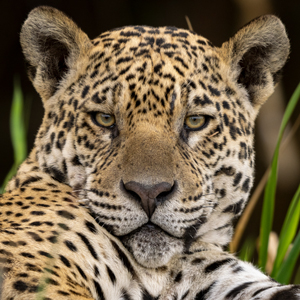
For over a decade we've been offering Photo Tours to Brazil's Pantanal and, quite honestly, every year seems to only get better. When we first started traveling to the Pantanal two or three days might pass before we saw our first Jaguar, but today, it is quite common to see two or three Jaguars on any outing! Back then, when we started, male Jaguars -- for some odd reason -- were the most habituated and the ones usually seen, but today, females, often with cubs, are the stars. So we've seen a lot of changes, and one of those is reflected in this Trip Report.
Below is one of the 'dream shots' Mary hoped to get on this trip, and she did - a mother Jaguar and her cub on a sandy beach.
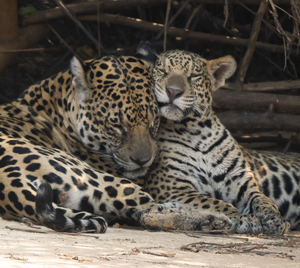
Rather than doing a day-to-day itinerary report, which would be lengthy since we spent nearly six weeks in the field, I'm offering a summation of our highlights, with plenty of images which will give you some insight into what we see and how truly great the Pantanal is for photography and wildlife viewing.
This year, we did two Photo Tours to the northern Pantanal, what many call 'Jaguar land' since this is where the majority of Jaguar sightings occur. At the conclusion of our second trip the entire group flew south to the southern Pantanal where we photographed mammals and birds that are more commonly seen in the south, if seen at all in the northern Pantanal.
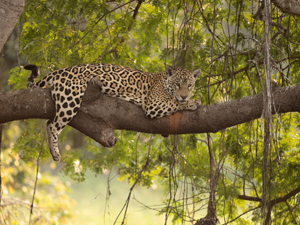 The northern Pantanal trips were among our best ever, with 25 Jaguar sightings on our first trip and 29 Jaguar sightings on the second trip. Most of these we photographed, and at least 75% of those offered great photo opportunities, not just sightings.
The northern Pantanal trips were among our best ever, with 25 Jaguar sightings on our first trip and 29 Jaguar sightings on the second trip. Most of these we photographed, and at least 75% of those offered great photo opportunities, not just sightings.
While I don't keep count of how many bird species we see or photograph, one of our participants kept a record and she photographed over 100 species between the two locations. We usually photograph at least 65 different species of birds, including waders, songbirds, and the unique tropical birds like Toucans, Aracaris, Parrots, and more.
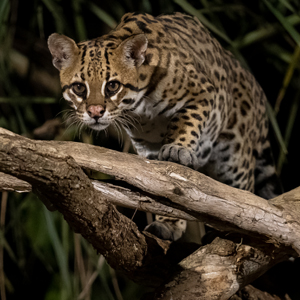
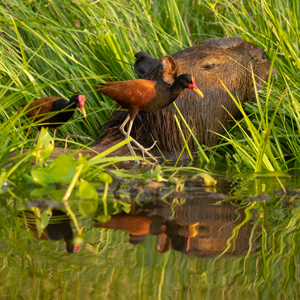
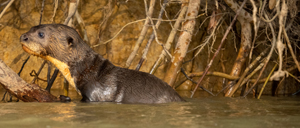
Ocelot, Capybara with Wattled Jacana, Giant Otter pup.
Additionally, of course, we had Ocelots, Giant Otters, Capybaras, Caimans, and Tapirs in the north, as well as birds, and, in the south, Giant Anteaters, Lesser Anteaters (aka Collared Anteater, Southern Tamandua), Pampas Deer, Armadillos, three species of Macaws, and a variety of other birds, including several great Birds of Prey.
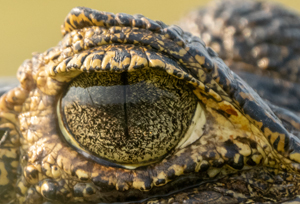 We're already anxious to return in 2023 where we'll be doing 3 Photo Tours to the northern Pantanal, adding an entirely new destination which we hope will fill in some of the mammal gaps we'd usually get in the southern Pantanal. Hopefully as you read on, you'll want to join us!
We're already anxious to return in 2023 where we'll be doing 3 Photo Tours to the northern Pantanal, adding an entirely new destination which we hope will fill in some of the mammal gaps we'd usually get in the southern Pantanal. Hopefully as you read on, you'll want to join us!
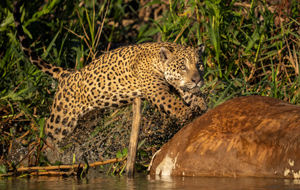
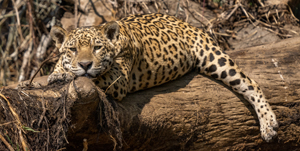
A Jaguar male had claimed a cow that had washed down stream, and was a regular visitor at the carcass for several days. A young male lies on a riverside log - a frequent occurance these days.
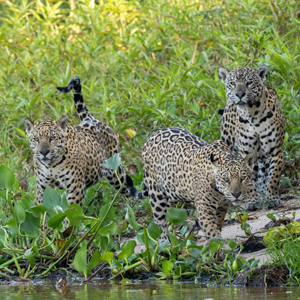
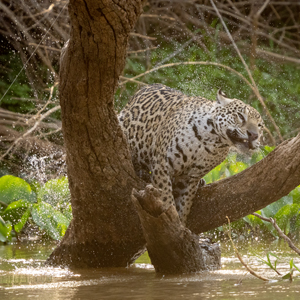
Predicting behavior and anticipating action, and where a Jaguar might go, is often the key to success, and this Jaguar family arriving at the beach, and this wierd-looking Jaguar shaking its furs are two examples.
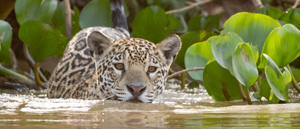
Jaguars love to swim, but getting a front-on shot can be difficult but we had several opportunities to do so. Don't expect to see a Jaguar successfully make a kill, but if luck is with you, you may ... as we did on our last day in Jaguar land.
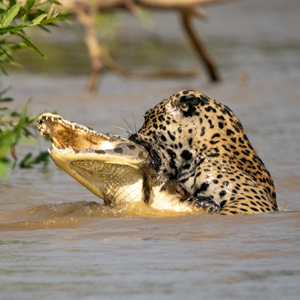
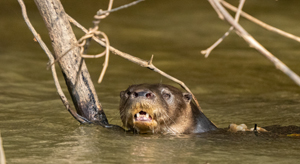
Neotropical Otters are uncommonly seen, and unlike the Giant Otter, this species is solitary.
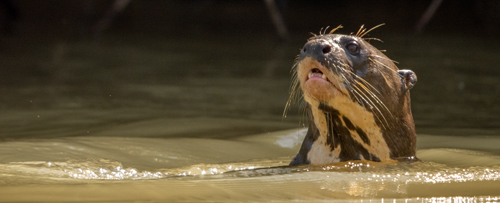
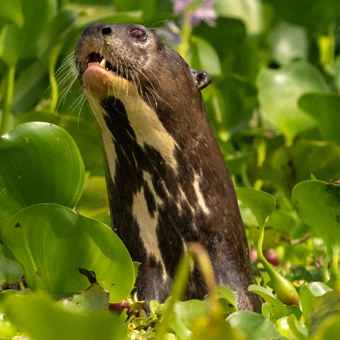
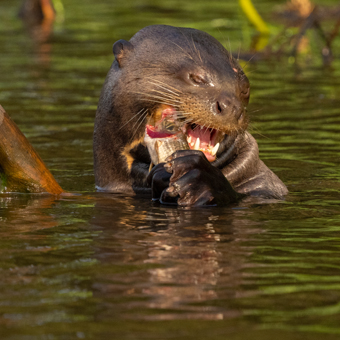
Giant Otters are common and fearless. Every otter has a slightly different throat pattern for easy identification of individuals. And ... they eat a lot of fish!
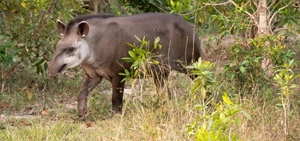
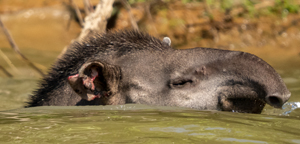
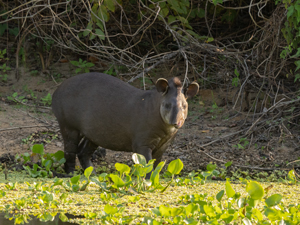
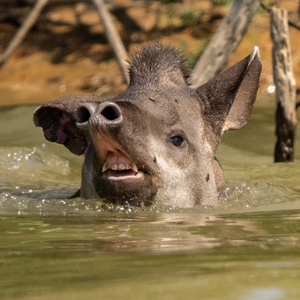
Brazilian Tapirs are South America's largest land mammal, and frequents swamps and rivers. We had 9 Tapirs while in the Pantanal this year!
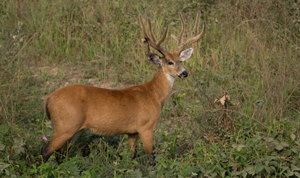
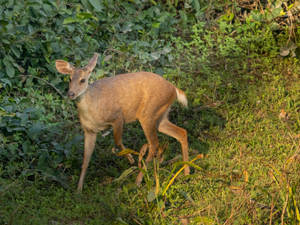
Three species of deer - Marsh and Brocket and below, Pampas.
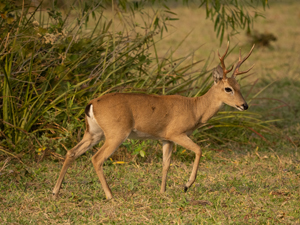
In the south Pantanal we had Giant Anteaters, Tamanduas, and Six-banded Armadillos.
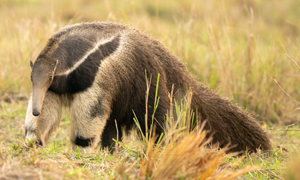
_22_4675.jpg)
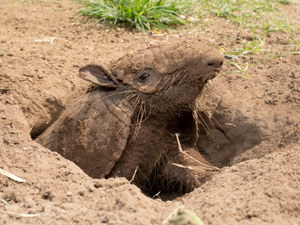
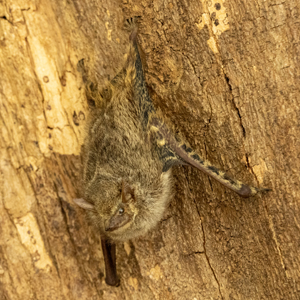
Proboscis (aka Long-nosed River) Bat
Birds - with over 100 species photographed, I'll limit this portfolio, but on my Instagram page and on Flickr you can see a broader portfolio.
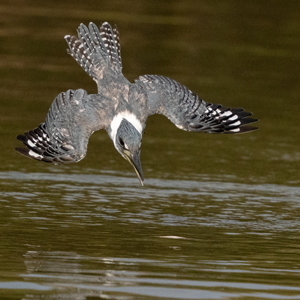
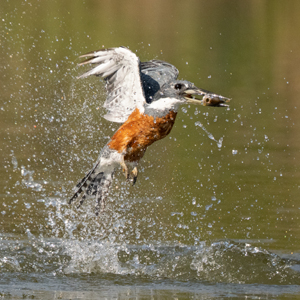
Ringed Kingfisher, using ProCapture or SH2 drive on the OM-1
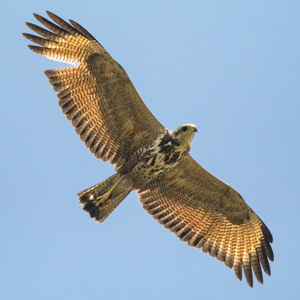
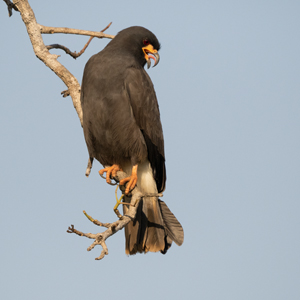
Savannah Hawk, Snail Kite
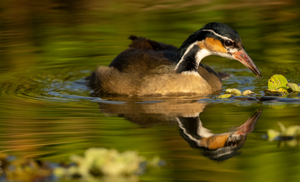
Sungrebe - normally quite shy, but we had 2 stars this year!
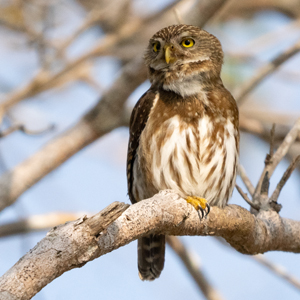
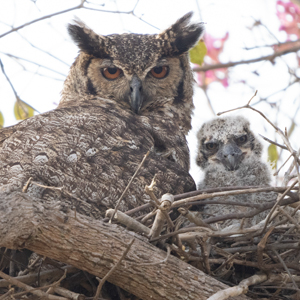
Ferruginous Owl calling, and Great Horned Owl with chick at a nest
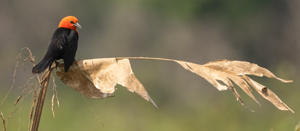
Scarlet-headed Blackbird - a true trophy songbird
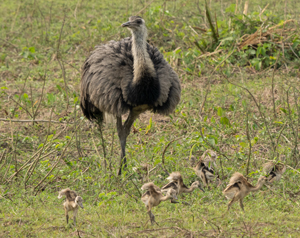
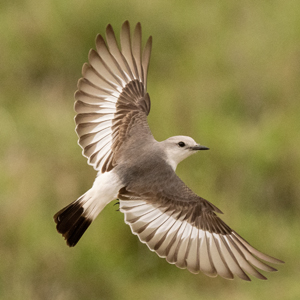
Greater Rhea and 16 chicks, White-rumped Monjita
with ProCapture
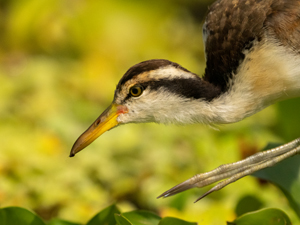
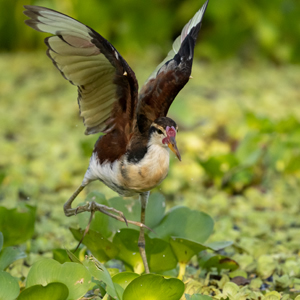
Wattled Jacana - immature, showing its very long toes for support in its wetland habitat
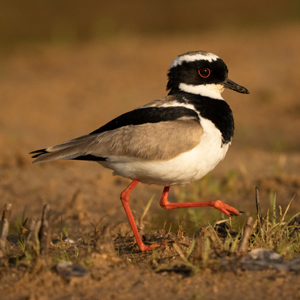
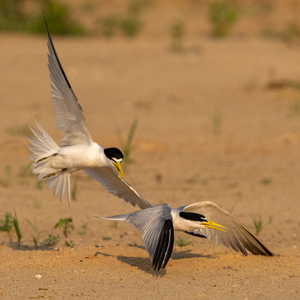
Pied Plover, Yellow-billed Tern
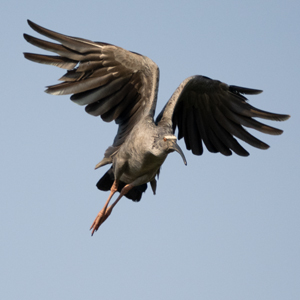
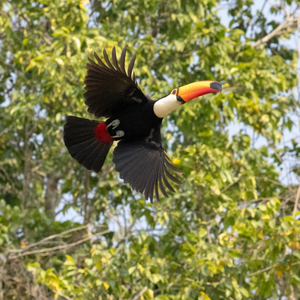
Plumbeous Ibis, Toco Toucan
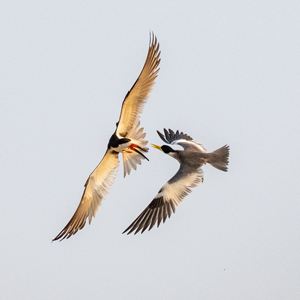
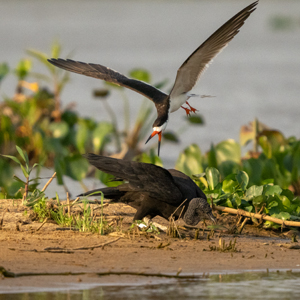
Black Skimmer - harassed by a Large-billed Tern, and dive-bombing a Black Vulture
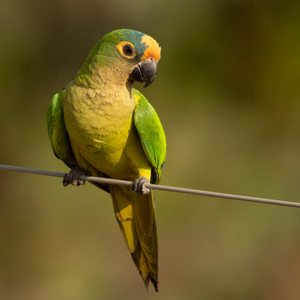
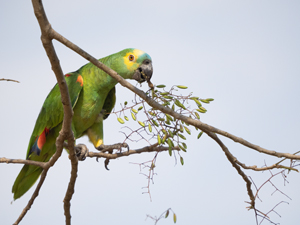
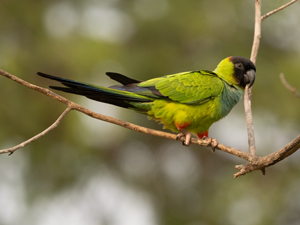
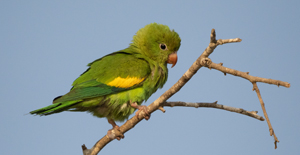
Peach-fronted Parakeet; Turquoise-fronted Amazon
Black-headed Parakeet; Yellow-chevroned
Parakeet
Join us on Facebook at: Follow Hoot Hollow
Office Phone: (717) 543-6423
Email us at info@hoothollow.com
Mary and Joe are proud to endorse the Photo Retailer that has
done the absolute most in supporting nature photography in all
its facets ---

Check out the Monthly Specials
from Hunt's
test

Brazil's Pantanal - North and South!
Trip Report 2022

For over a decade we've been offering Photo Tours to Brazil's Pantanal and, quite honestly, every year seems to only get better. When we first started traveling to the Pantanal two or three days might pass before we saw our first Jaguar, but today, it is quite common to see two or three Jaguars on any outing! Back then, when we started, male Jaguars -- for some odd reason -- were the most habituated and the ones usually seen, but today, females, often with cubs, are the stars. So we've seen a lot of changes, and one of those is reflected in this Trip Report.
Below is one of the 'dream shots' Mary hoped to get on this trip, and she did - a mother Jaguar and her cub on a sandy beach.

Rather than doing a day-to-day itinerary report, which would be lengthy since we spent nearly six weeks in the field, I'm offering a summation of our highlights, with plenty of images which will give you some insight into what we see and how truly great the Pantanal is for photography and wildlife viewing.
This year, we did two Photo Tours to the northern Pantanal, what many call 'Jaguar land' since this is where the majority of Jaguar sightings occur. At the conclusion of our second trip the entire group flew south to the southern Pantanal where we photographed mammals and birds that are more commonly seen in the south, if seen at all in the northern Pantanal.
 The northern Pantanal trips were among our best ever, with 25 Jaguar sightings on our first trip and 29 Jaguar sightings on the second trip. Most of these we photographed, and at least 75% of those offered great photo opportunities, not just sightings.
The northern Pantanal trips were among our best ever, with 25 Jaguar sightings on our first trip and 29 Jaguar sightings on the second trip. Most of these we photographed, and at least 75% of those offered great photo opportunities, not just sightings.
While I don't keep count of how many bird species we see or photograph, one of our participants kept a record and she photographed over 100 species between the two locations. We usually photograph at least 65 different species of birds, including waders, songbirds, and the unique tropical birds like Toucans, Aracaris, Parrots, and more.



Ocelot, Capybara with Wattled Jacana, Giant Otter pup.
Additionally, of course, we had Ocelots, Giant Otters, Capybaras, Caimans, and Tapirs in the north, as well as birds, and, in the south, Giant Anteaters, Lesser Anteaters (aka Collared Anteater, Southern Tamandua), Pampas Deer, Armadillos, three species of Macaws, and a variety of other birds, including several great Birds of Prey.
 We're already anxious to return in 2023 where we'll be doing 3 Photo Tours to the northern Pantanal, adding an entirely new destination which we hope will fill in some of the mammal gaps we'd usually get in the southern Pantanal. Hopefully as you read on, you'll want to join us!
We're already anxious to return in 2023 where we'll be doing 3 Photo Tours to the northern Pantanal, adding an entirely new destination which we hope will fill in some of the mammal gaps we'd usually get in the southern Pantanal. Hopefully as you read on, you'll want to join us!


A Jaguar male had claimed a cow that had washed down stream, and was a regular visitor at the carcass for several days. A young male lies on a riverside log - a frequent occurance these days.


Predicting behavior and anticipating action, and where a Jaguar might go, is often the key to success, and this Jaguar family arriving at the beach, and this wierd-looking Jaguar shaking its furs are two examples.

Jaguars love to swim, but getting a front-on shot can be difficult but we had several opportunities to do so. Don't expect to see a Jaguar successfully make a kill, but if luck is with you, you may ... as we did on our last day in Jaguar land.


Neotropical Otters are uncommonly seen, and unlike the Giant Otter, this species is solitary.



Giant Otters are common and fearless. Every otter has a slightly different throat pattern for easy identification of individuals. And ... they eat a lot of fish!




Brazilian Tapirs are South America's largest land mammal, and frequents swamps and rivers. We had 9 Tapirs while in the Pantanal this year!


Three species of deer - Marsh and Brocket and below, Pampas.

In the south Pantanal we had Giant Anteaters, Tamanduas, and Six-banded Armadillos.

_22_4675.jpg)


Proboscis (aka Long-nosed River) Bat
Birds - with over 100 species photographed, I'll limit this portfolio, but on my Instagram page and on Flickr you can see a broader portfolio.


Ringed Kingfisher, using ProCapture or SH2 drive on the OM-1


Savannah Hawk, Snail Kite

Sungrebe - normally quite shy, but we had 2 stars this year!


Ferruginous Owl calling, and Great Horned Owl with chick at a nest

Scarlet-headed Blackbird - a true trophy songbird


Greater Rhea and 16 chicks, White-rumped Monjita
with ProCapture


Wattled Jacana - immature, showing its very long toes for support in its wetland habitat


Pied Plover, Yellow-billed Tern


Plumbeous Ibis, Toco Toucan


Black Skimmer - harassed by a Large-billed Tern, and dive-bombing a Black Vulture




Peach-fronted Parakeet; Turquoise-fronted Amazon
Black-headed Parakeet; Yellow-chevroned
Parakeet
Join us on Facebook at: Follow Hoot Hollow
Office Phone: (717) 543-6423
Email us at info@hoothollow.com
Mary and Joe are proud to endorse the Photo Retailer that has
done the absolute most in supporting nature photography in all
its facets ---

Check out the Monthly Specials
from Hunt's
test

Brazil's Pantanal - North and South!
Trip Report 2022

For over a decade we've been offering Photo Tours to Brazil's Pantanal and, quite honestly, every year seems to only get better. When we first started traveling to the Pantanal two or three days might pass before we saw our first Jaguar, but today, it is quite common to see two or three Jaguars on any outing! Back then, when we started, male Jaguars -- for some odd reason -- were the most habituated and the ones usually seen, but today, females, often with cubs, are the stars. So we've seen a lot of changes, and one of those is reflected in this Trip Report.
Below is one of the 'dream shots' Mary hoped to get on this trip, and she did - a mother Jaguar and her cub on a sandy beach.

Rather than doing a day-to-day itinerary report, which would be lengthy since we spent nearly six weeks in the field, I'm offering a summation of our highlights, with plenty of images which will give you some insight into what we see and how truly great the Pantanal is for photography and wildlife viewing.
This year, we did two Photo Tours to the northern Pantanal, what many call 'Jaguar land' since this is where the majority of Jaguar sightings occur. At the conclusion of our second trip the entire group flew south to the southern Pantanal where we photographed mammals and birds that are more commonly seen in the south, if seen at all in the northern Pantanal.
 The northern Pantanal trips were among our best ever, with 25 Jaguar sightings on our first trip and 29 Jaguar sightings on the second trip. Most of these we photographed, and at least 75% of those offered great photo opportunities, not just sightings.
The northern Pantanal trips were among our best ever, with 25 Jaguar sightings on our first trip and 29 Jaguar sightings on the second trip. Most of these we photographed, and at least 75% of those offered great photo opportunities, not just sightings.
While I don't keep count of how many bird species we see or photograph, one of our participants kept a record and she photographed over 100 species between the two locations. We usually photograph at least 65 different species of birds, including waders, songbirds, and the unique tropical birds like Toucans, Aracaris, Parrots, and more.



Ocelot, Capybara with Wattled Jacana, Giant Otter pup.
Additionally, of course, we had Ocelots, Giant Otters, Capybaras, Caimans, and Tapirs in the north, as well as birds, and, in the south, Giant Anteaters, Lesser Anteaters (aka Collared Anteater, Southern Tamandua), Pampas Deer, Armadillos, three species of Macaws, and a variety of other birds, including several great Birds of Prey.
 We're already anxious to return in 2023 where we'll be doing 3 Photo Tours to the northern Pantanal, adding an entirely new destination which we hope will fill in some of the mammal gaps we'd usually get in the southern Pantanal. Hopefully as you read on, you'll want to join us!
We're already anxious to return in 2023 where we'll be doing 3 Photo Tours to the northern Pantanal, adding an entirely new destination which we hope will fill in some of the mammal gaps we'd usually get in the southern Pantanal. Hopefully as you read on, you'll want to join us!


A Jaguar male had claimed a cow that had washed down stream, and was a regular visitor at the carcass for several days. A young male lies on a riverside log - a frequent occurance these days.


Predicting behavior and anticipating action, and where a Jaguar might go, is often the key to success, and this Jaguar family arriving at the beach, and this wierd-looking Jaguar shaking its furs are two examples.

Jaguars love to swim, but getting a front-on shot can be difficult but we had several opportunities to do so. Don't expect to see a Jaguar successfully make a kill, but if luck is with you, you may ... as we did on our last day in Jaguar land.


Neotropical Otters are uncommonly seen, and unlike the Giant Otter, this species is solitary.



Giant Otters are common and fearless. Every otter has a slightly different throat pattern for easy identification of individuals. And ... they eat a lot of fish!




Brazilian Tapirs are South America's largest land mammal, and frequents swamps and rivers. We had 9 Tapirs while in the Pantanal this year!


Three species of deer - Marsh and Brocket and below, Pampas.

In the south Pantanal we had Giant Anteaters, Tamanduas, and Six-banded Armadillos.

_22_4675.jpg)


Proboscis (aka Long-nosed River) Bat
Birds - with over 100 species photographed, I'll limit this portfolio, but on my Instagram page and on Flickr you can see a broader portfolio.


Ringed Kingfisher, using ProCapture or SH2 drive on the OM-1


Savannah Hawk, Snail Kite

Sungrebe - normally quite shy, but we had 2 stars this year!


Ferruginous Owl calling, and Great Horned Owl with chick at a nest

Scarlet-headed Blackbird - a true trophy songbird


Greater Rhea and 16 chicks, White-rumped Monjita
with ProCapture


Wattled Jacana - immature, showing its very long toes for support in its wetland habitat


Pied Plover, Yellow-billed Tern


Plumbeous Ibis, Toco Toucan


Black Skimmer - harassed by a Large-billed Tern, and dive-bombing a Black Vulture




Peach-fronted Parakeet; Turquoise-fronted Amazon
Black-headed Parakeet; Yellow-chevroned
Parakeet
Join us on Facebook at: Follow Hoot Hollow
Office Phone: (717) 543-6423
Email us at info@hoothollow.com
Mary and Joe are proud to endorse the Photo Retailer that has
done the absolute most in supporting nature photography in all
its facets ---

Check out the Monthly Specials
from Hunt's
test

Brazil's Pantanal - North and South!
Trip Report 2022

For over a decade we've been offering Photo Tours to Brazil's Pantanal and, quite honestly, every year seems to only get better. When we first started traveling to the Pantanal two or three days might pass before we saw our first Jaguar, but today, it is quite common to see two or three Jaguars on any outing! Back then, when we started, male Jaguars -- for some odd reason -- were the most habituated and the ones usually seen, but today, females, often with cubs, are the stars. So we've seen a lot of changes, and one of those is reflected in this Trip Report.
Below is one of the 'dream shots' Mary hoped to get on this trip, and she did - a mother Jaguar and her cub on a sandy beach.

Rather than doing a day-to-day itinerary report, which would be lengthy since we spent nearly six weeks in the field, I'm offering a summation of our highlights, with plenty of images which will give you some insight into what we see and how truly great the Pantanal is for photography and wildlife viewing.
This year, we did two Photo Tours to the northern Pantanal, what many call 'Jaguar land' since this is where the majority of Jaguar sightings occur. At the conclusion of our second trip the entire group flew south to the southern Pantanal where we photographed mammals and birds that are more commonly seen in the south, if seen at all in the northern Pantanal.
 The northern Pantanal trips were among our best ever, with 25 Jaguar sightings on our first trip and 29 Jaguar sightings on the second trip. Most of these we photographed, and at least 75% of those offered great photo opportunities, not just sightings.
The northern Pantanal trips were among our best ever, with 25 Jaguar sightings on our first trip and 29 Jaguar sightings on the second trip. Most of these we photographed, and at least 75% of those offered great photo opportunities, not just sightings.
While I don't keep count of how many bird species we see or photograph, one of our participants kept a record and she photographed over 100 species between the two locations. We usually photograph at least 65 different species of birds, including waders, songbirds, and the unique tropical birds like Toucans, Aracaris, Parrots, and more.



Ocelot, Capybara with Wattled Jacana, Giant Otter pup.
Additionally, of course, we had Ocelots, Giant Otters, Capybaras, Caimans, and Tapirs in the north, as well as birds, and, in the south, Giant Anteaters, Lesser Anteaters (aka Collared Anteater, Southern Tamandua), Pampas Deer, Armadillos, three species of Macaws, and a variety of other birds, including several great Birds of Prey.
 We're already anxious to return in 2023 where we'll be doing 3 Photo Tours to the northern Pantanal, adding an entirely new destination which we hope will fill in some of the mammal gaps we'd usually get in the southern Pantanal. Hopefully as you read on, you'll want to join us!
We're already anxious to return in 2023 where we'll be doing 3 Photo Tours to the northern Pantanal, adding an entirely new destination which we hope will fill in some of the mammal gaps we'd usually get in the southern Pantanal. Hopefully as you read on, you'll want to join us!


A Jaguar male had claimed a cow that had washed down stream, and was a regular visitor at the carcass for several days. A young male lies on a riverside log - a frequent occurance these days.


Predicting behavior and anticipating action, and where a Jaguar might go, is often the key to success, and this Jaguar family arriving at the beach, and this wierd-looking Jaguar shaking its furs are two examples.

Jaguars love to swim, but getting a front-on shot can be difficult but we had several opportunities to do so. Don't expect to see a Jaguar successfully make a kill, but if luck is with you, you may ... as we did on our last day in Jaguar land.


Neotropical Otters are uncommonly seen, and unlike the Giant Otter, this species is solitary.



Giant Otters are common and fearless. Every otter has a slightly different throat pattern for easy identification of individuals. And ... they eat a lot of fish!




Brazilian Tapirs are South America's largest land mammal, and frequents swamps and rivers. We had 9 Tapirs while in the Pantanal this year!


Three species of deer - Marsh and Brocket and below, Pampas.

In the south Pantanal we had Giant Anteaters, Tamanduas, and Six-banded Armadillos.

_22_4675.jpg)


Proboscis (aka Long-nosed River) Bat
Birds - with over 100 species photographed, I'll limit this portfolio, but on my Instagram page and on Flickr you can see a broader portfolio.


Ringed Kingfisher, using ProCapture or SH2 drive on the OM-1


Savannah Hawk, Snail Kite

Sungrebe - normally quite shy, but we had 2 stars this year!


Ferruginous Owl calling, and Great Horned Owl with chick at a nest

Scarlet-headed Blackbird - a true trophy songbird


Greater Rhea and 16 chicks, White-rumped Monjita
with ProCapture


Wattled Jacana - immature, showing its very long toes for support in its wetland habitat


Pied Plover, Yellow-billed Tern


Plumbeous Ibis, Toco Toucan


Black Skimmer - harassed by a Large-billed Tern, and dive-bombing a Black Vulture




Peach-fronted Parakeet; Turquoise-fronted Amazon
Black-headed Parakeet; Yellow-chevroned
Parakeet
Join us on Facebook at: Follow Hoot Hollow
Office Phone: (717) 543-6423
Email us at info@hoothollow.com
Mary and Joe are proud to endorse the Photo Retailer that has
done the absolute most in supporting nature photography in all
its facets ---

Check out the Monthly Specials
from Hunt's
test
Brazil's Pantanal - North and South!
Trip Report 2022

For over a decade we've been offering Photo Tours to Brazil's Pantanal and, quite honestly, every year seems to only get better. When we first started traveling to the Pantanal two or three days might pass before we saw our first Jaguar, but today, it is quite common to see two or three Jaguars on any outing! Back then, when we started, male Jaguars -- for some odd reason -- were the most habituated and the ones usually seen, but today, females, often with cubs, are the stars. So we've seen a lot of changes, and one of those is reflected in this Trip Report.
Below is one of the 'dream shots' Mary hoped to get on this trip, and she did - a mother Jaguar and her cub on a sandy beach.

Rather than doing a day-to-day itinerary report, which would be lengthy since we spent nearly six weeks in the field, I'm offering a summation of our highlights, with plenty of images which will give you some insight into what we see and how truly great the Pantanal is for photography and wildlife viewing.
This year, we did two Photo Tours to the northern Pantanal, what many call 'Jaguar land' since this is where the majority of Jaguar sightings occur. At the conclusion of our second trip the entire group flew south to the southern Pantanal where we photographed mammals and birds that are more commonly seen in the south, if seen at all in the northern Pantanal.
 The northern Pantanal trips were among our best ever, with 25 Jaguar sightings on our first trip and 29 Jaguar sightings on the second trip. Most of these we photographed, and at least 75% of those offered great photo opportunities, not just sightings.
The northern Pantanal trips were among our best ever, with 25 Jaguar sightings on our first trip and 29 Jaguar sightings on the second trip. Most of these we photographed, and at least 75% of those offered great photo opportunities, not just sightings.
While I don't keep count of how many bird species we see or photograph, one of our participants kept a record and she photographed over 100 species between the two locations. We usually photograph at least 65 different species of birds, including waders, songbirds, and the unique tropical birds like Toucans, Aracaris, Parrots, and more.



Ocelot, Capybara with Wattled Jacana, Giant Otter pup.
Additionally, of course, we had Ocelots, Giant Otters, Capybaras, Caimans, and Tapirs in the north, as well as birds, and, in the south, Giant Anteaters, Lesser Anteaters (aka Collared Anteater, Southern Tamandua), Pampas Deer, Armadillos, three species of Macaws, and a variety of other birds, including several great Birds of Prey.
 We're already anxious to return in 2023 where we'll be doing 3 Photo Tours to the northern Pantanal, adding an entirely new destination which we hope will fill in some of the mammal gaps we'd usually get in the southern Pantanal. Hopefully as you read on, you'll want to join us!
We're already anxious to return in 2023 where we'll be doing 3 Photo Tours to the northern Pantanal, adding an entirely new destination which we hope will fill in some of the mammal gaps we'd usually get in the southern Pantanal. Hopefully as you read on, you'll want to join us!


A Jaguar male had claimed a cow that had washed down stream, and was a regular visitor at the carcass for several days. A young male lies on a riverside log - a frequent occurance these days.


Predicting behavior and anticipating action, and where a Jaguar might go, is often the key to success, and this Jaguar family arriving at the beach, and this wierd-looking Jaguar shaking its furs are two examples.

Jaguars love to swim, but getting a front-on shot can be difficult but we had several opportunities to do so. Don't expect to see a Jaguar successfully make a kill, but if luck is with you, you may ... as we did on our last day in Jaguar land.


Neotropical Otters are uncommonly seen, and unlike the Giant Otter, this species is solitary.



Giant Otters are common and fearless. Every otter has a slightly different throat pattern for easy identification of individuals. And ... they eat a lot of fish!




Brazilian Tapirs are South America's largest land mammal, and frequents swamps and rivers. We had 9 Tapirs while in the Pantanal this year!


Three species of deer - Marsh and Brocket and below, Pampas.

In the south Pantanal we had Giant Anteaters, Tamanduas, and Six-banded Armadillos.

_22_4675.jpg)


Proboscis (aka Long-nosed River) Bat
Birds - with over 100 species photographed, I'll limit this portfolio, but on my Instagram page and on Flickr you can see a broader portfolio.


Ringed Kingfisher, using ProCapture or SH2 drive on the OM-1


Savannah Hawk, Snail Kite

Sungrebe - normally quite shy, but we had 2 stars this year!


Ferruginous Owl calling, and Great Horned Owl with chick at a nest

Scarlet-headed Blackbird - a true trophy songbird


Greater Rhea and 16 chicks, White-rumped Monjita
with ProCapture


Wattled Jacana - immature, showing its very long toes for support in its wetland habitat


Pied Plover, Yellow-billed Tern


Plumbeous Ibis, Toco Toucan


Black Skimmer - harassed by a Large-billed Tern, and dive-bombing a Black Vulture




Peach-fronted Parakeet; Turquoise-fronted Amazon
Black-headed Parakeet; Yellow-chevroned
Parakeet
Join us on Facebook at: Follow Hoot Hollow
Office Phone: (717) 543-6423
Email us at info@hoothollow.com
Mary and Joe are proud to endorse the Photo Retailer that has
done the absolute most in supporting nature photography in all
its facets ---

Check out the Monthly Specials
from Hunt's

Scarlet-headed Blackbird - a true trophy songbird


Greater Rhea and 16 chicks, White-rumped Monjita
with ProCapture


Wattled Jacana - immature, showing its very long toes for support in its wetland habitat


Pied Plover, Yellow-billed Tern


Plumbeous Ibis, Toco Toucan


Black Skimmer - harassed by a Large-billed Tern, and dive-bombing a Black Vulture




Peach-fronted Parakeet; Turquoise-fronted Amazon
Black-headed Parakeet; Yellow-chevroned
Parakeet

Scarlet-headed Blackbird - a true trophy songbird


Greater Rhea and 16 chicks, White-rumped Monjita
with ProCapture


Wattled Jacana - immature, showing its very long toes for support in its wetland habitat


Pied Plover, Yellow-billed Tern


Plumbeous Ibis, Toco Toucan


Black Skimmer - harassed by a Large-billed Tern, and dive-bombing a Black Vulture




Peach-fronted Parakeet; Turquoise-fronted Amazon
Black-headed Parakeet; Yellow-chevroned
Parakeet
Join us on Facebook at: Follow Hoot Hollow
Office Phone: (717) 543-6423
Email us at info@hoothollow.com
Mary and Joe are proud to endorse the Photo Retailer that has
done the absolute most in supporting nature photography in all
its facets ---

Check out the Monthly Specials
from Hunt's
test


